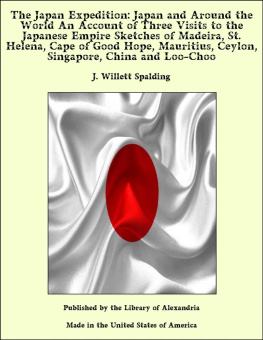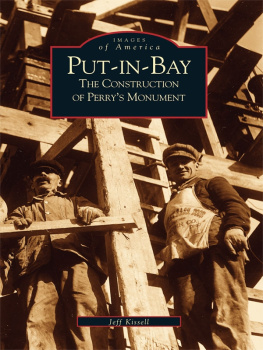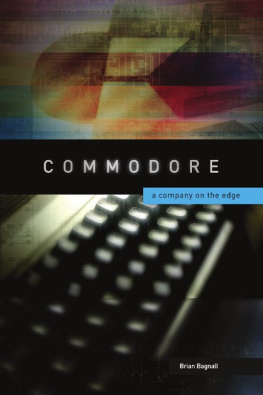
New Perspectives on Maritime History and Nautical Archaeology
James C. Bradford and Gene A. Smith, editors
Rivers, seas, oceans, and lakes have provided food and transportation for man since the beginning of time. As avenues of communication they link the peoples of the world, continuing to the present to transport more commodities and trade goods than all other methods of conveyance combined. The New Perspectives on Maritime History and Nautical Archaeology series is devoted to exploring the significance of the earths waterways while providing lively and important books that cover the spectrum of maritime history and nautical archaeology broadly defined. The series includes works that focus on the role of canals, rivers, lakes, and oceans in history; on the economic, military, and political use of those waters; on the exploration of waters and their secrets by seafarers, archeologists, oceanographers, and other scientists; and upon the people, communities, and industries that support maritime endeavors. Limited by neither geography nor time, volumes in the series contribute to the overall understanding of maritime history and can be read with profit by both general readers and specialists alike.

Naval Institute Press
291 Wood Road
Annapolis, MD 21402
2013 by John A. Wolter, David A. Ranzan, and John J. McDonough
All rights reserved. No part of this book may be reproduced or utilized in any form or by any means, electronic or mechanical, including photocopying and recording, or by any information storage and retrieval system, without permission in writing from the publisher.
Library of Congress Cataloging-in-Publication Data
Speiden, William, 17971861
With Commodore Perry to Japan : the journal of William Speiden Jr., 18521855 / edited by John A. Wolter, David A. Ranzan, and John J. McDonough.
1 online resource. (New perspectives on maritime history and nautical archaeology)
Includes bibliographical references.
Description based on print version record and CIP data provided by publisher; resource not viewed.
ISBN 978-1-61251-337-9 (ePub) 1. Speiden, William, approximately 1836approximately 1910Diaries. 2. United States Naval Expedition to Japan (18521854) 3. Perry, Matthew Calbraith, 17941858. 4. SailorsUnited StatesDiaries. 5. Mississippi (Side-wheel steamer) 6. United States. NavySea life. 7. United States. NavyBiography. 8. CoastsChinaDescription and travel. 9. JapanForeign relationsUnited States. 10. United StatesForeign relationsJapan. I. Wolter, John Amadeus, date, editor. II. Ranzan, David A., editor. III. McDonough, John J., editor. IV. Title.
DS881.8
952.025dc23
2013035779

 Print editions meet the requirements of ANSI/NISO z39.48-1992 (Permanence of Paper).
Print editions meet the requirements of ANSI/NISO z39.48-1992 (Permanence of Paper).
21 20 19 18 17 16 15 14 13 9 8 7 6 5 4 3 2 1
First printing
All illustrations are from the Library of Congress.
To John Joseph McDonough Jr. (19262009), friend, scholar, historian
Contents


. Pearl River and the approaches to Canton
. The Harbor of Naha, Lew Chew
. William Speiden Jr. Sketch Map of Yedo Bay
. Western shore of the Bay of Yedo
. Chart of the world showing the track of the U.S. steam frigates Mississippi, Susquehanna, and Powhatan as flagships of the Japan Squadron

William S. Speiden Jr., pursers clerk on the U.S. frigate Mississippi, kept a regular diary of the events transpiring all around him, written with the unpracticed hand of a mere boy during the momentous U.S. naval expedition to open Japan to the trade of the Western world in 18521854. Although some entries were extracted verbatim from the deck log of the Mississippi, the journal recounts the stirring scenes that were vividly impressed upon Speidens mind while sailing to the Pacific Ocean via the Cape of Good Hope. In addition, the journal is filled with images ranging from hand-drawn, pen-and-ink scenes of everyday life sketched by Speiden and other members of the crew to exquisitely colored and detailed pith paintings by Chinese artists. Except for a few instances, naval historians have mostly ignored the journal. The editors hope this fascinating account of the expedition through the eyes of the pursers clerk of the Mississippi will further illuminate Commodore Perrys expedition to Japan.
The editors intent has been to transcribe the text as accurately and literally as possible in the hope of preserving the style of the nineteenth-century writing. In the interests of consistency and clarity, however, the editors have made a few changes in punctuation and spelling. Speiden used capitalizations very freely and was not consistent in their use. In order to make the sentences more intelligible, his usage has been altered. However, the editors were generous in allowing his capitalizations, especially if the context is forgiving. Speiden was especially indiscriminant in his use of commas, using them for any and all purposes. The editors have omitted many altogether and converted others to other forms of punctuation: periods especially, but semicolons also. Where there was no punctuation at all and the sense of the sentence called for it, the editors created and enclosed it within brackets. It was not necessary to use brackets for dates or locations (e.g., May 12, 1853, or Norfolk, Virginia). The datelines at the start of each entry have been standardized as follows: place (when given), name of the day, month, and numerical day. The editors have dropped the th, as in 9th, or d, as in 2d. The place at which an entry was written is cited only when it differed from the previous entry. Any errors in dates are kept as they were, followed by the corrections in brackets. Interlineations were brought down to the line of the text at the place indicated, as well as addition in the margins. Marginal insertions were enclosed within braces.
Speiden almost always enclosed ship names in quotation marks. The editors did not retain these, and all ship names were italicized. In addition, the editors removed quotation marks enclosing geographical locations. When an incomplete or incorrect word could be expanded or corrected by a bracketed insertion, the editors did so. However, if it was too awkward to do this, then the full correct word was placed in brackets, following the incorrect word. If there was no confusion, or if the word added flavor, it was unaltered. General orders and other correspondence inserted throughout the journal were transcribed and placed as appendices with notes indicating their placement in the journal.
Next page












